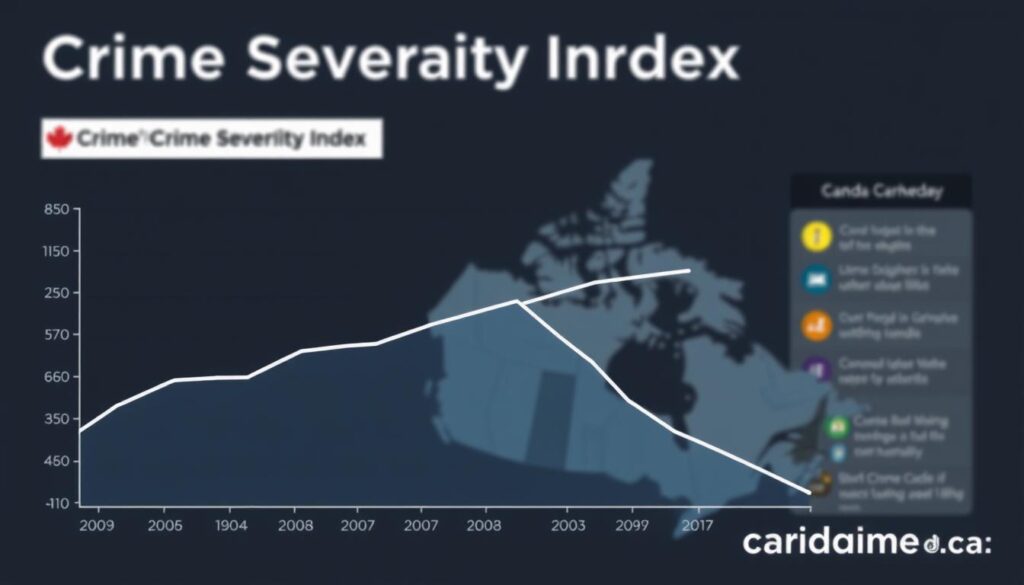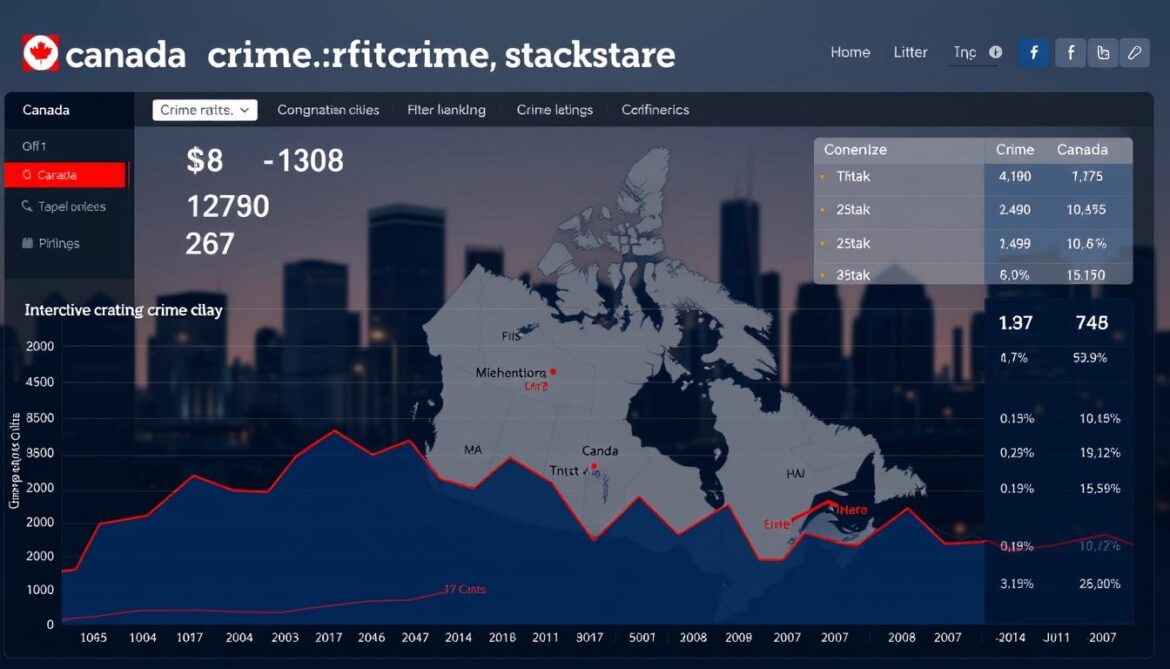Canada’s crime landscape is a complex and multifaceted issue, with crime rates varying significantly across different cities and regions. The Crime Severity Index (CSI), a sophisticated metric that weighs offenses based on their seriousness, provides a more nuanced understanding of crime trends. In Canada, the CSI is calculated by assigning weights to various offenses based on average sentences handed down by courts.
Understanding crime statistics is crucial for citizens, policymakers, and law enforcement agencies to grasp patterns and trends in public safety. By analyzing crime data and the CSI, it’s possible to identify regional variations in crime rates and the factors influencing these trends, such as socioeconomic conditions and local law enforcement strategies.
This comprehensive guide will explore how to interpret Canadian crime statistics, understand the Crime Severity Index, and analyze the current crime landscape across major metropolitan areas.
Understanding Canada’s Crime Landscape
Understanding crime trends in Canada requires a nuanced approach, considering the vast differences across the country. Canada’s crime landscape has evolved significantly over recent decades, with overall crime rates following different patterns across provinces and territories.
The Current State of Crime in Canada
Crime statistics show significant variations across Canadian metropolitan areas. For instance, the Greater Toronto Area, with a population of 6,202,225, has a Crime Severity Index (CSI) of 58.5, representing a 10.8% year-over-year increase. In contrast, the Winnipeg Metropolitan Region, with a population of 834,678, has a much higher CSI of 129.1, despite a 5.6% decrease from the previous year. Halifax Regional Municipality, with a population of 465,703, shows a CSI of 72.0, marking a 1.3% decrease.
The variations in crime rates are influenced by multiple factors, including regional characteristics, demographic changes, and shifts in law enforcement priorities. The COVID-19 pandemic has also had a significant impact on crime patterns, with notable decreases in some types of crime and increases in others, such as domestic violence and cybercrime.
| Metropolitan Area | Population | Crime Severity Index (CSI) | Year-over-Year Change |
|---|---|---|---|
| Greater Toronto Area | 6,202,225 | 58.5 | +10.8% |
| Winnipeg Metropolitan Region | 834,678 | 129.1 | -5.6% |
| Halifax Regional Municipality | 465,703 | 72.0 | -1.3% |
How Crime Statistics Are Collected and Reported
 Crime statistics in Canada are collected through the Uniform Crime Reporting Survey by Statistics Canada, which standardizes information from police services across the country. The Canadian Criminal Code provides the legal framework for defining, reporting, and prosecuting crimes, creating a standardized system for crime statistics collection.
Crime statistics in Canada are collected through the Uniform Crime Reporting Survey by Statistics Canada, which standardizes information from police services across the country. The Canadian Criminal Code provides the legal framework for defining, reporting, and prosecuting crimes, creating a standardized system for crime statistics collection.
Understanding the methodological limitations of crime statistics is crucial for proper interpretation. Factors such as reporting biases, classification challenges, and changes in legislation or police practices can significantly impact the accuracy of crime statistics. Crime statistics are typically reported annually, allowing for year-over-year comparisons that help identify emerging trends and evaluate crime prevention strategies.
Decoding the Crime Severity Index in Canada
The Crime Severity Index, introduced by Statistics Canada in 2009, represents a significant advancement in measuring crime severity across Canadian cities. This index provides a more nuanced understanding of crime by taking into account the severity of crimes committed, rather than just their frequency.
What is the Crime Severity Index?
The Crime Severity Index (CSI) is a statistical measure that weights crimes according to their seriousness, as determined by the sentences handed down by Canadian courts. This approach allows for a more accurate comparison of crime across different jurisdictions and time periods. The CSI is calculated by multiplying each offense by its weight, summing these weighted offenses, and then dividing by the population to create a standardized index.
- The CSI was developed to address the limitation of traditional crime rates, which count all crimes equally regardless of their severity.
- It provides a more detailed picture of crime by distinguishing between violent and non-violent crimes.
How the Crime Severity Index Differs from Raw Crime Rates
Unlike raw crime rates, which simply count the number of criminal incidents per population, the CSI assigns different weights to crimes based on their seriousness. This means that crimes with more severe penalties, such as violent crimes, are given greater weight in the CSI calculation. As a result, the CSI provides a more comprehensive understanding of the impact of crime on communities.

Violent Crime vs. Property Crime Indices
The CSI is further divided into two major components: the Violent Crime Severity Index and the Non-Violent (Property) Crime Severity Index. Violent crimes, such as homicide and assault, receive higher weights due to their greater impact on victims and society. In contrast, property crimes, while still significant, are generally assigned lower weights. For example, in 2023, Prince Albert, SK had a violent crime index of 496.3 (+4.6%) and a property crime index of 271.9 (+21.8%), illustrating the varying severity of crime across different regions.
By examining the CSI and its components, it’s clear that crime severity varies significantly across Canadian cities. Understanding these differences is crucial for developing effective crime prevention strategies and improving public safety.
Crime Statistics by City Canada: Major Metropolitan Areas
Understanding crime statistics in major Canadian cities is essential for developing effective crime prevention strategies. The Crime Severity Index (CSI) provides valuable insights into the crime landscape across different metropolitan areas.
Major Canadian metropolitan areas exhibit significant variations in their CSI scores. For instance, the Greater Toronto Area has a relatively low CSI of 58.5, despite a 10.8% increase from the previous year. In contrast, Winnipeg consistently ranks among the highest with a CSI of 129.1, particularly for violent crimes, though it saw a 5.6% decrease in recent statistics.
British Columbia cities generally show higher CSI values compared to Ontario cities of similar size. For example, Metro Vancouver has a CSI of 90.2, while Edmonton stands at 113.3. These variations highlight the need for region-specific approaches to crime prevention and law enforcement.
Effective crime prevention strategies vary by region, with some cities focusing on community policing and others on technological solutions like CCTV and predictive analytics. Property crime prevention has become a priority, with police services offering public education on target hardening and community watch programs. For more detailed information on Canada’s crime rates and how they compare, visit Canada Crime Rates.
Temporal analysis of crime statistics reveals cyclical patterns influenced by seasonal factors, economic conditions, and changes in policing strategies. Understanding these trends is crucial for targeted approaches to law enforcement resource allocation and community safety planning.
In conclusion, analyzing crime statistics by city helps identify unique crime profiles, informing effective crime prevention and law enforcement strategies across Canada’s diverse metropolitan areas.

